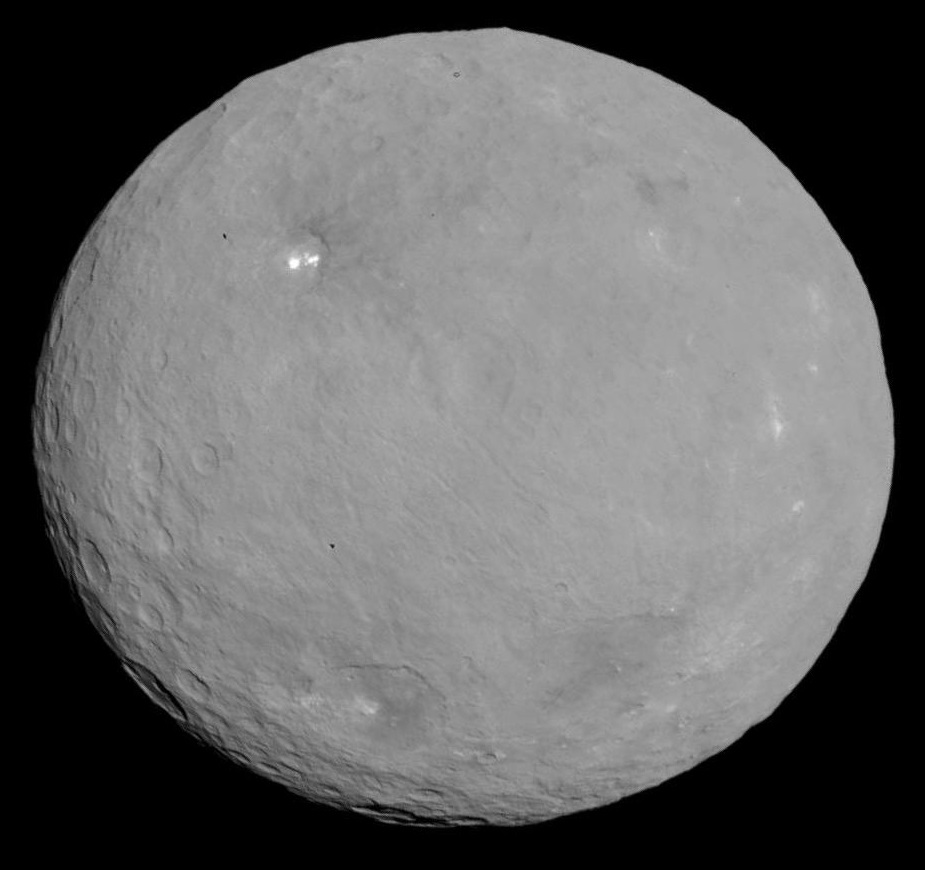G-type asteroid on:
[Wikipedia]
[Google]
[Amazon]
 G-type asteroids are a relatively uncommon type of
G-type asteroids are a relatively uncommon type of
 G-type asteroids are a relatively uncommon type of
G-type asteroids are a relatively uncommon type of carbon
Carbon () is a chemical element with the symbol C and atomic number 6. It is nonmetallic and tetravalent
In chemistry, the valence (US spelling) or valency (British spelling) of an element is the measure of its combining capacity with o ...
aceous asteroid
An asteroid is a minor planet of the inner Solar System. Sizes and shapes of asteroids vary significantly, ranging from 1-meter rocks to a dwarf planet almost 1000 km in diameter; they are rocky, metallic or icy bodies with no atmosphere.
...
that makes up approximately 5% of asteroids. The most notable asteroid in this class is 1 Ceres.
Characteristics
Generally similar to the C-type objects, but contain a strongultraviolet
Ultraviolet (UV) is a form of electromagnetic radiation with wavelength from 10 nanometer, nm (with a corresponding frequency around 30 Hertz, PHz) to 400 nm (750 Hertz, THz), shorter than that of visible light, but longer than ...
absorption feature below 0.5 μm. An absorption feature around 0.7 μm may also be present, which is indicative of phyllosilicate minerals such as clay
Clay is a type of fine-grained natural soil material containing clay minerals (hydrous aluminium phyllosilicates, e.g. kaolin, Al2 Si2 O5( OH)4).
Clays develop plasticity when wet, due to a molecular film of water surrounding the clay par ...
s or mica.
In the SMASS classification
An asteroid spectral type is assigned to asteroids based on their emission spectrum, color, and sometimes albedo. These types are thought to correspond to an asteroid's surface composition. For small bodies that are not internally differentiat ...
the G-type corresponds to the Cgh and Cg types, depending on the presence or absence (respectively) of the absorption feature at 0.7 μm. The G-type, C-type and some rare types are sometimes collected together into a wider C-group
The C-Group culture is an archaeological culture found in Lower Nubia, which dates from ca. 2400 BCE to ca. 1550 BCE. It was named by George A. Reisner. With no central site and no written evidence about what these people called themselves, Re ...
of carbon
Carbon () is a chemical element with the symbol C and atomic number 6. It is nonmetallic and tetravalent
In chemistry, the valence (US spelling) or valency (British spelling) of an element is the measure of its combining capacity with o ...
aceous asteroids.
See also
*Asteroid spectral types
An asteroid spectral type is assigned to asteroids based on their emission spectrum, color, and sometimes albedo. These types are thought to correspond to an asteroid's surface composition. For small bodies that are not internally differentiated ...
References
* D. J. Tholen Asteroid taxonomic classifications in Asteroids III Asteroid spectral classes * {{asteroid-stub